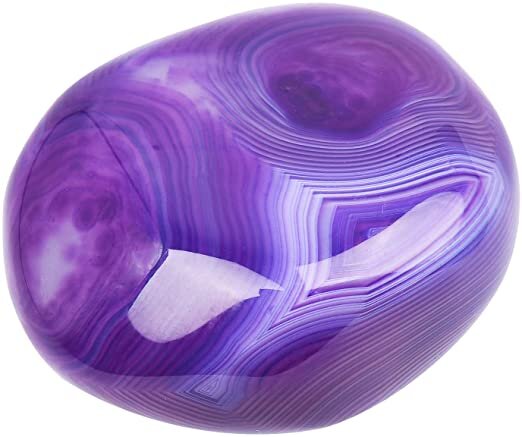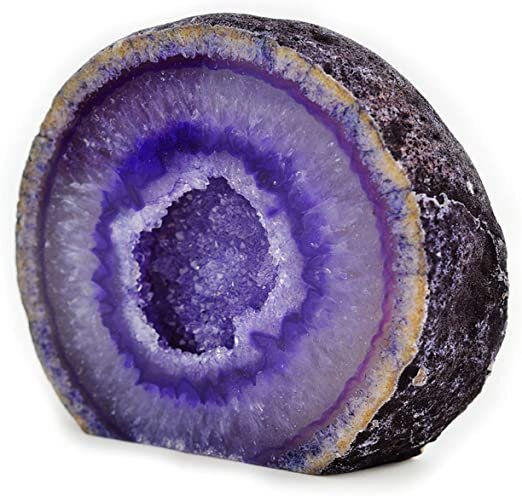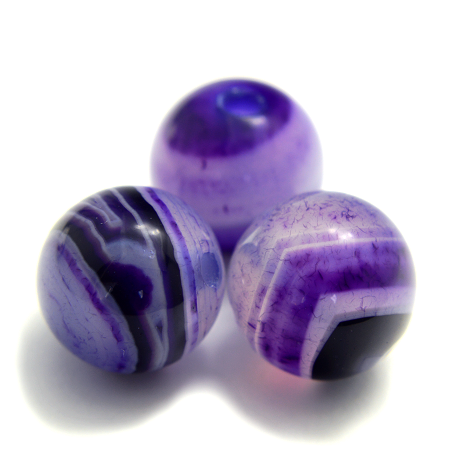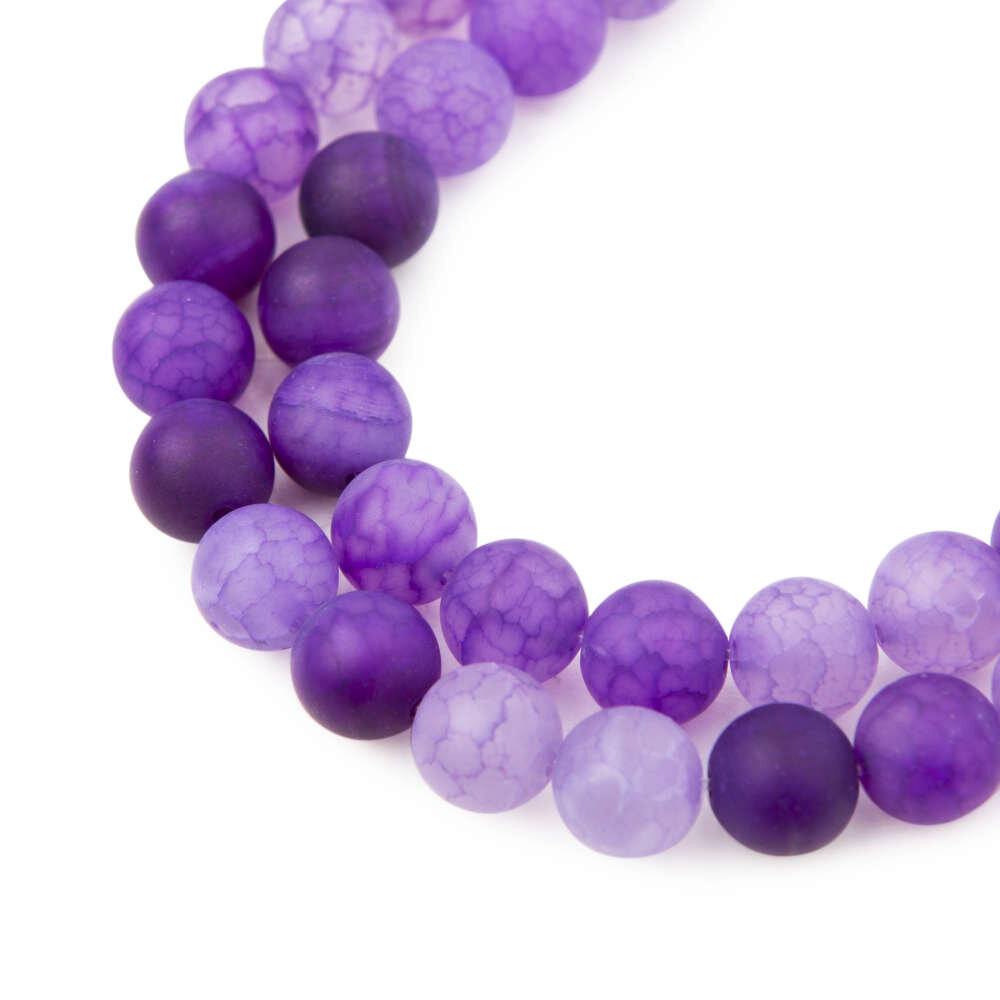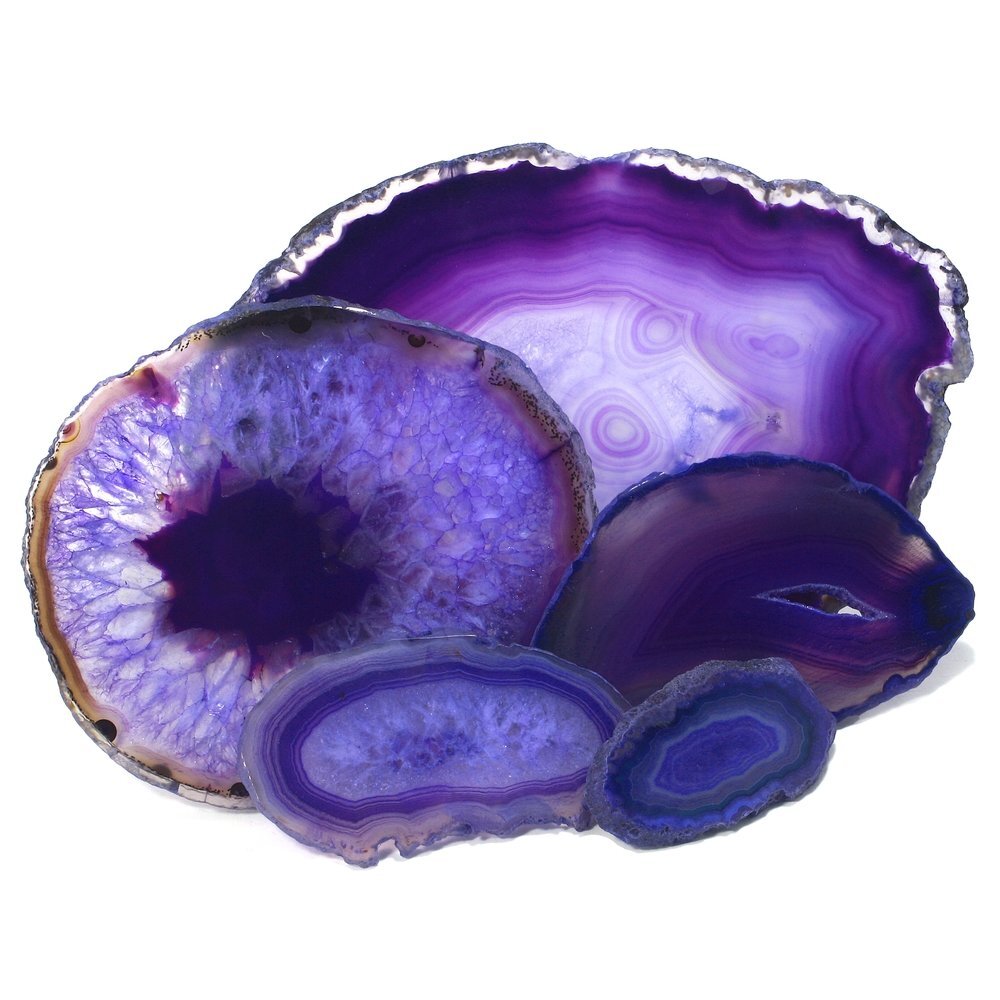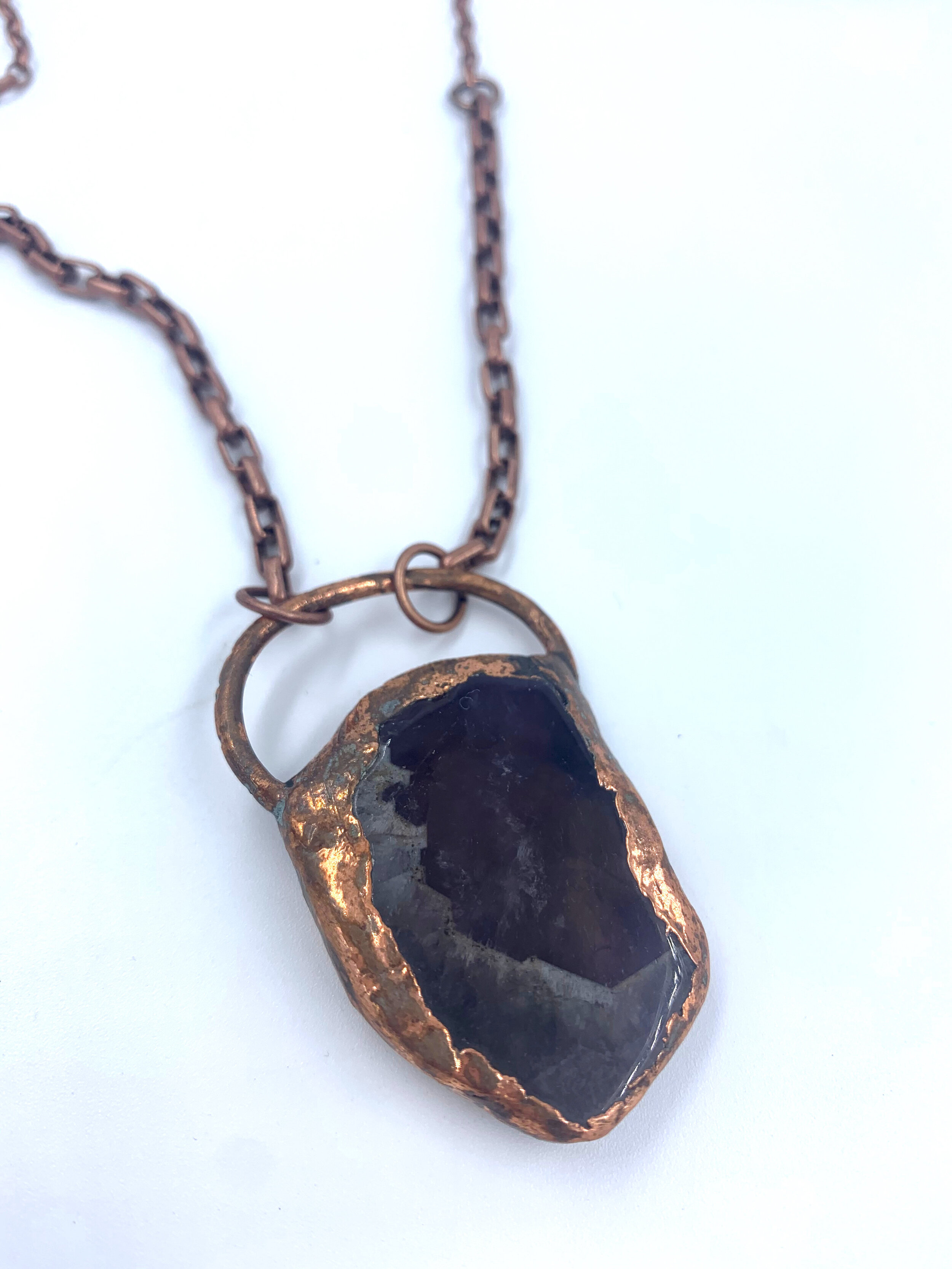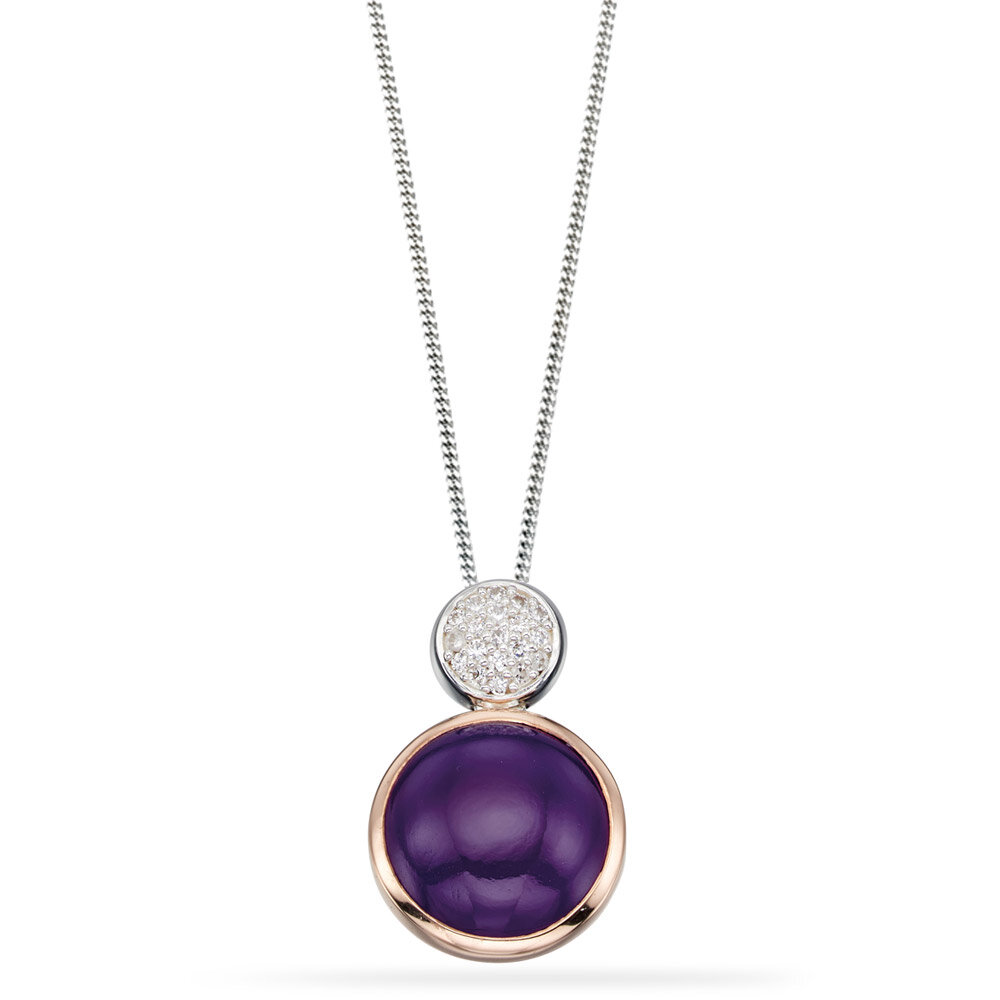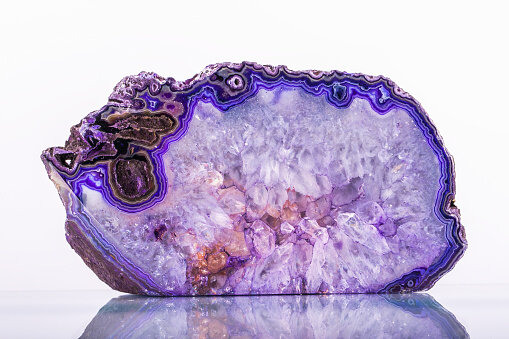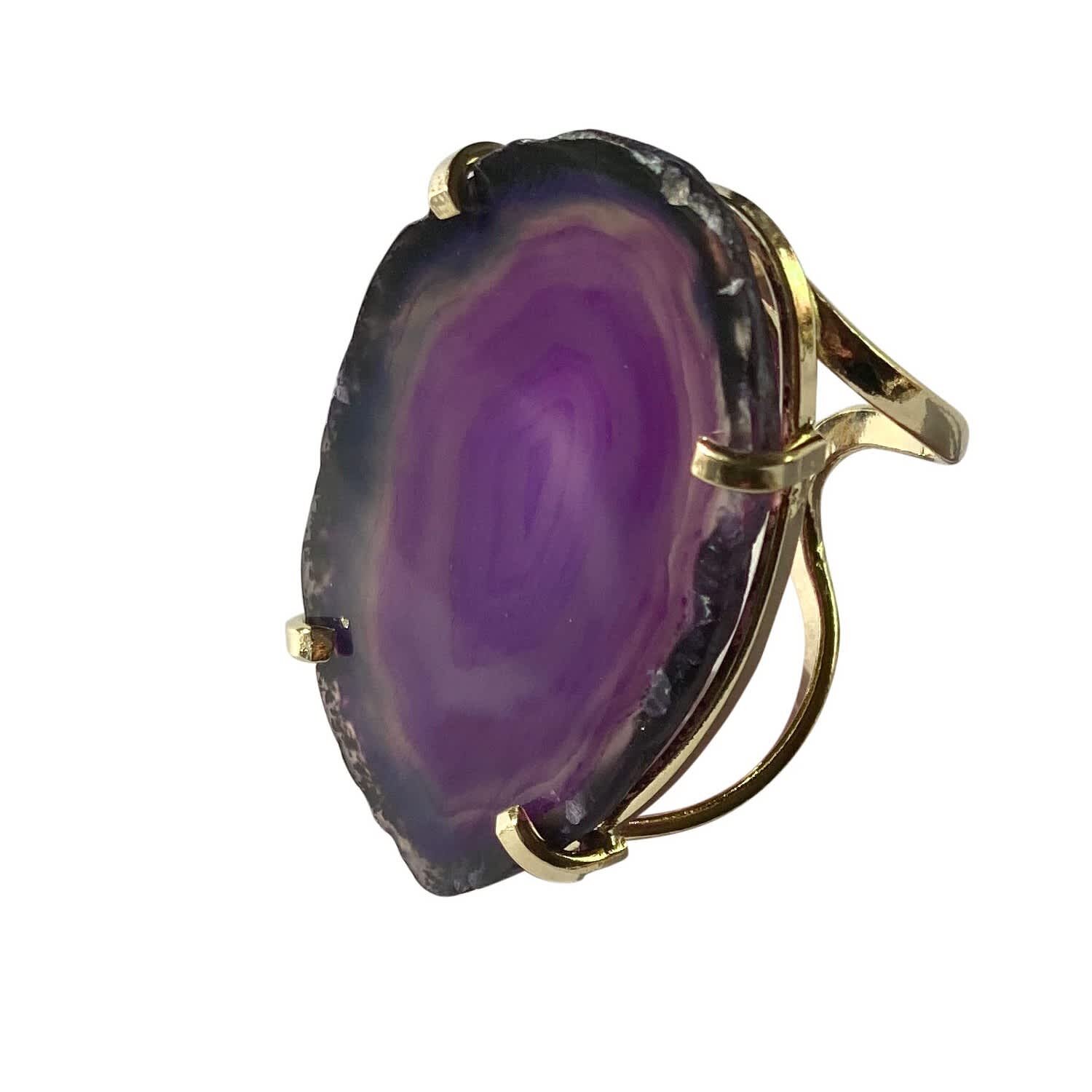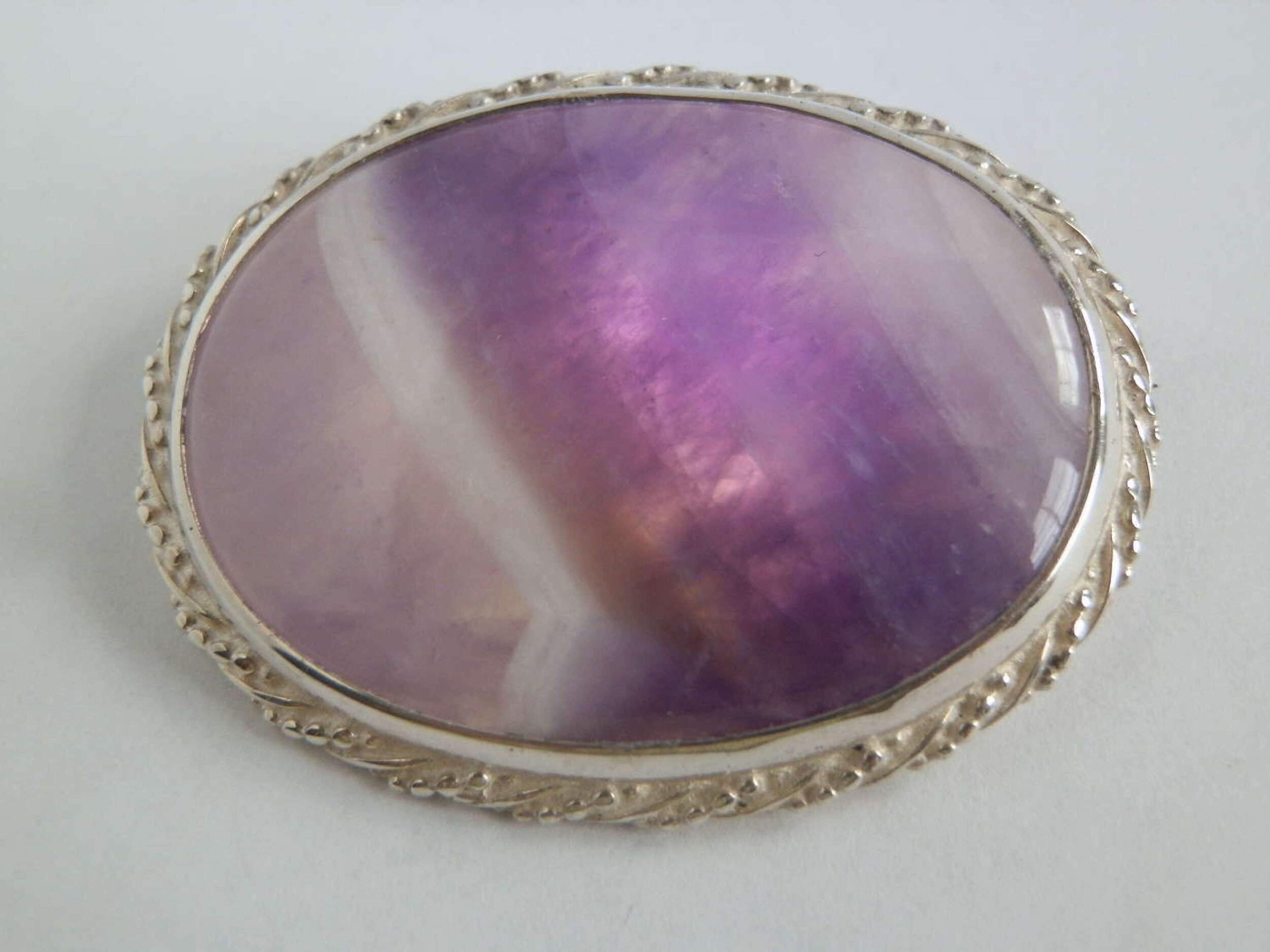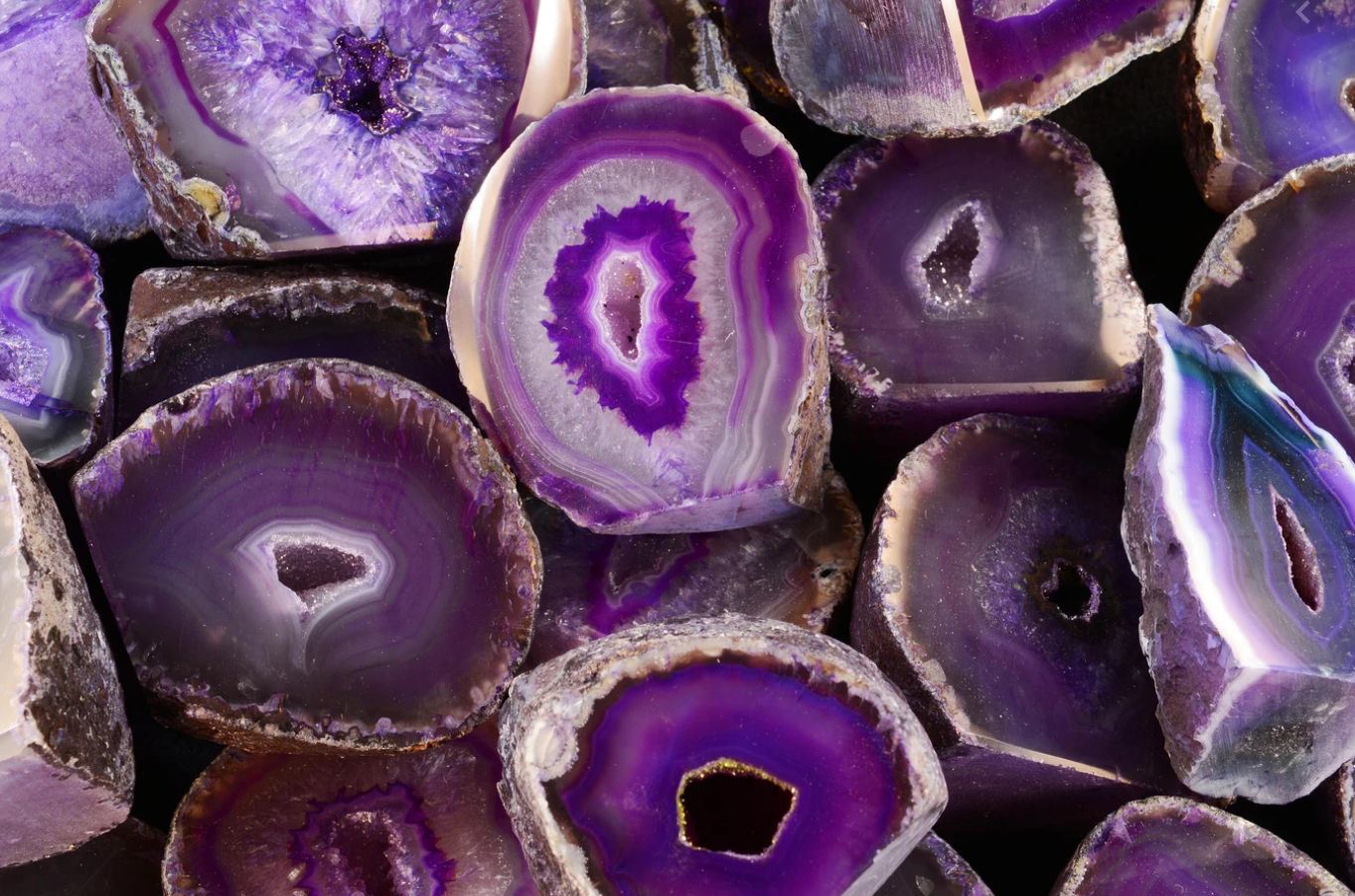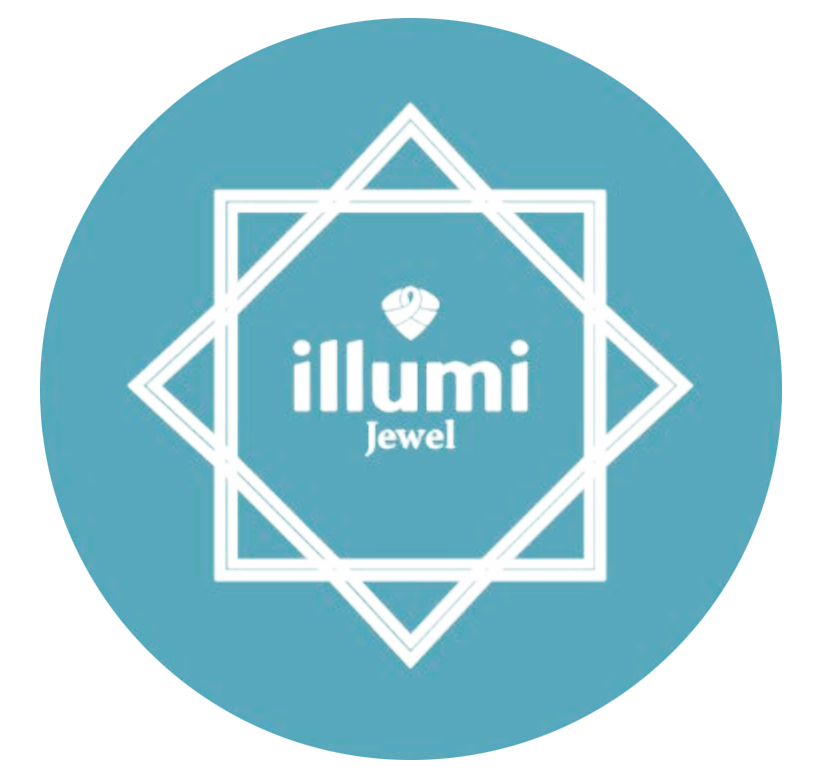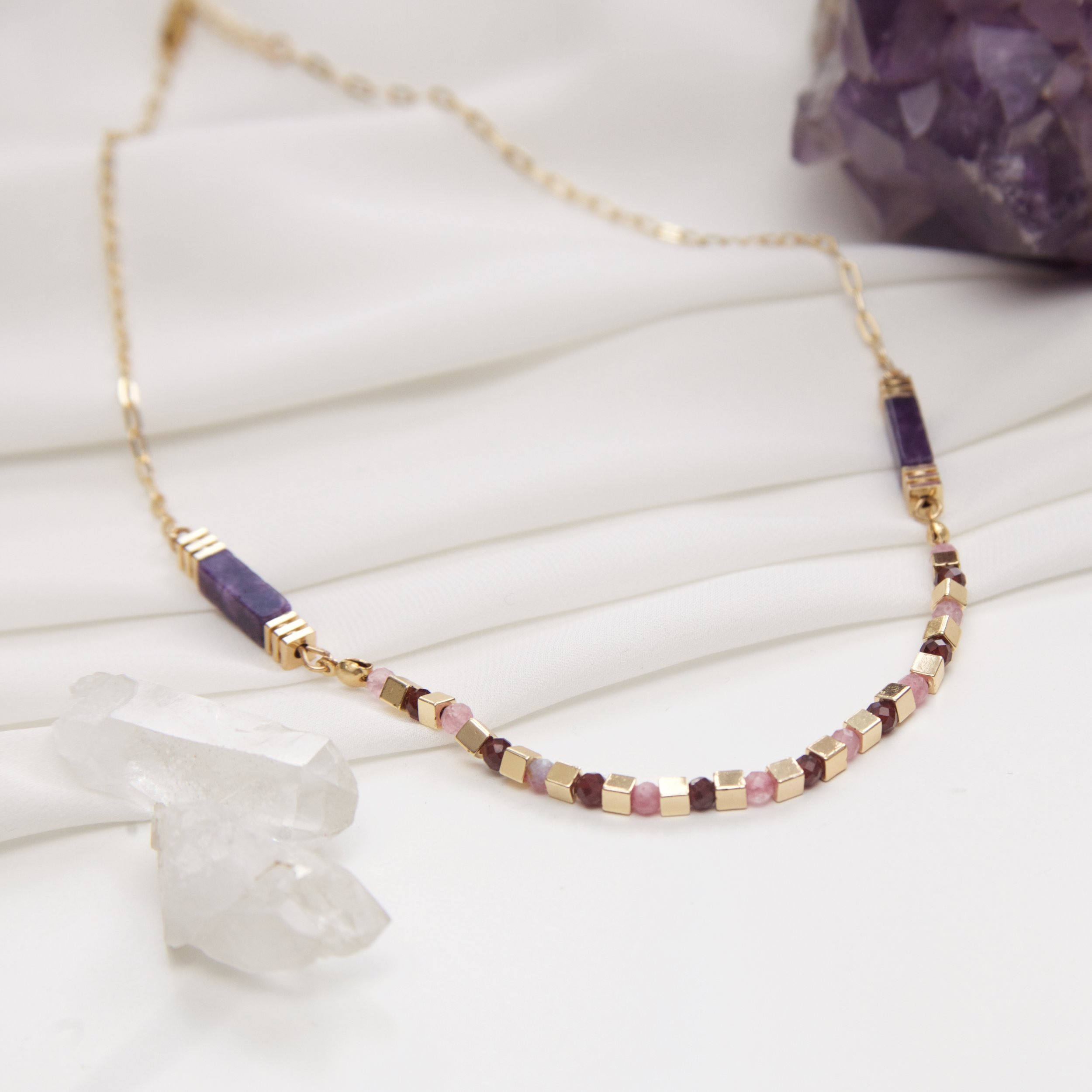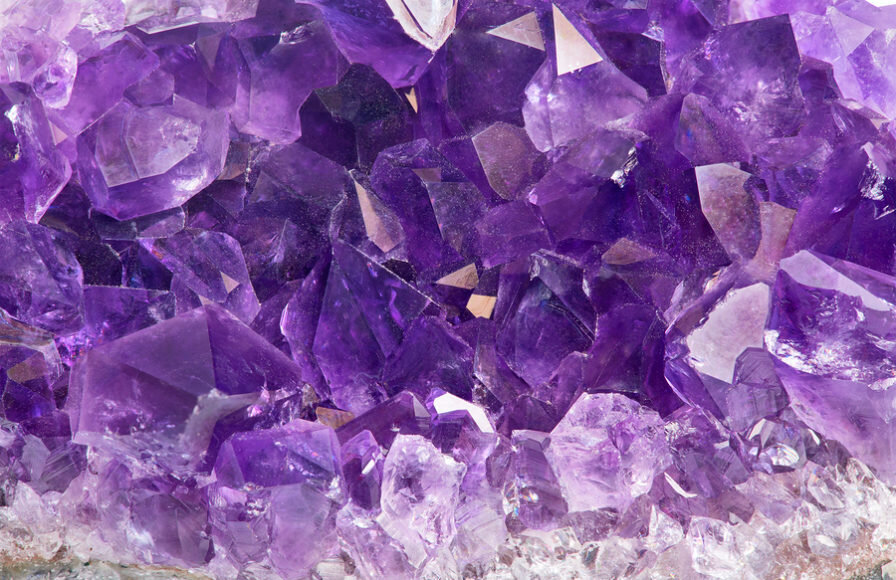
Amethyst
Amethyst is a purple variety of quartz (SiOs) and owes its violet colour to irradiation, impurities of iron and in some cases other transition metals.
Amethyst occurs in primary hues from a light pinkish violet colour to a deep purple colour. Amethyst may exhibit one or both secondary hues, red and blue.
FUN FACT
The name come from Koine Greek “amethystos” and ancient Greek “methysko”, modern Green “metho”, as reference “intoxicate” to the belief that the stone protected its owner from drunkenness.
In Greek mythology, Amethyst was a woman who was turned into quartz by Artemis in an attempt to save her from being killed by Dionysus. Later Dionysus was remorse about his action, and his tears tainted the quartz thus appearing purple.
The ancient Greeks wore amethyst and carved drinking vessels from it in the belief that it would prevent intoxication because it is tainted by Dionysus’ tears.
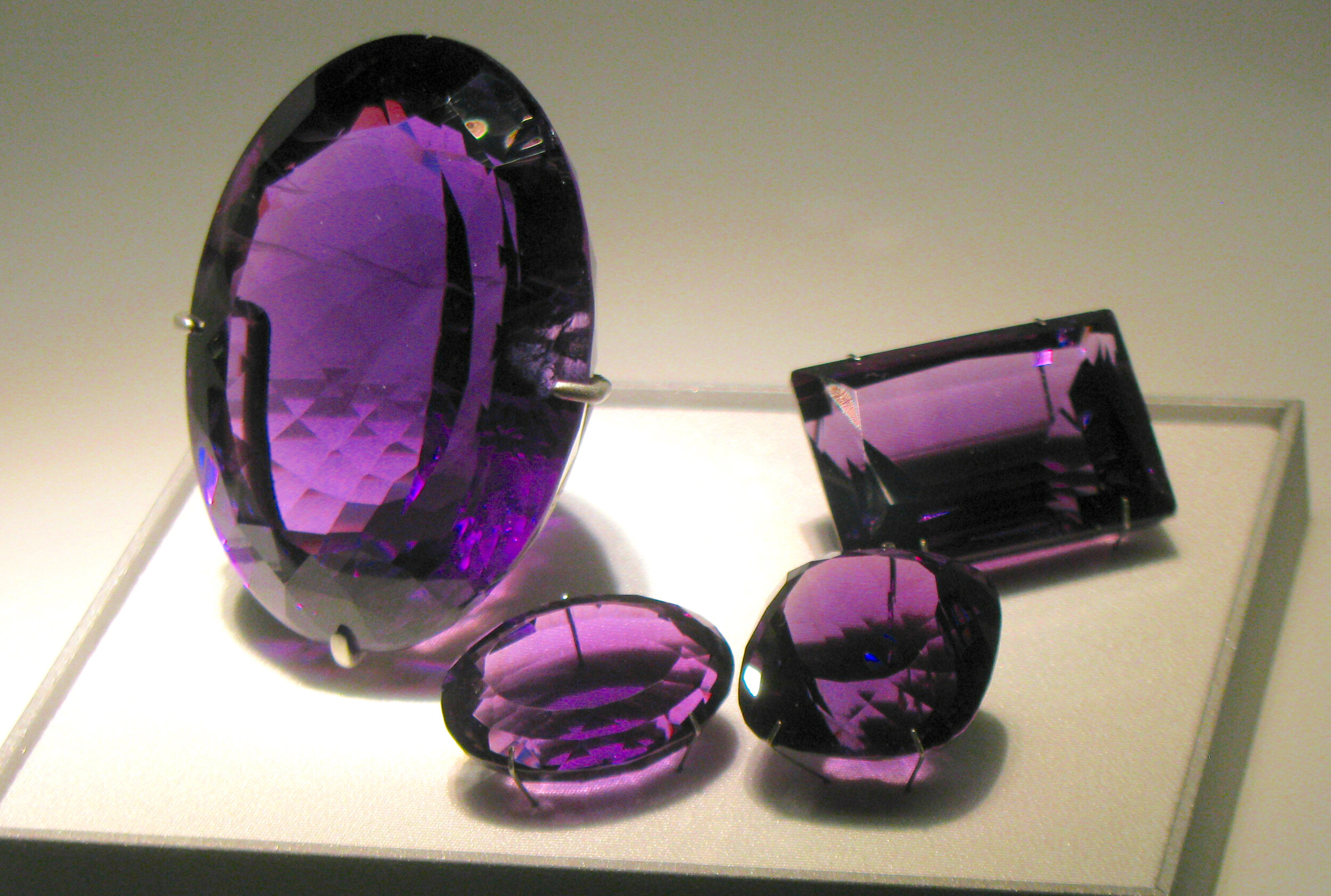
Geography Locations
High quality Amethyst can be found in Siberia, Sri Lanka, Brazil, Uruguay, and the far East. The ideal grade is called “Deep Siberian” and has a primary purple hue of around 75-80%, with 15-20% blue and (depending on the light source) red secondary hues.
Amazing Properties
Transformation
Amethyst is a unique stone that can transform lives. It is known to enhance motivation and memory, which helps in many situations whether it be in learning, or career that requires high performance. Like quartz, it has strong amplification properties, which can be used to help to focus any goals and bring into fruition.
Calmness
Amethyst is one of the most common stones that are recommended to help sleep better. It promotes grounding and calmness, and often used for meditation. It is said to help relieves energetic causes of insomnia, assists with emotional balance, heals and cleanse the mind, body, and spirit.

History
Amethyst is one of the most well known stones in the ancient world, prized for its deep and mysterious purple colour. Ancient Egyptians used it as a gemstone for intaglio engraved gems. Medieval European soldiers wear amethyst amulets as protection in battle in the belief that amethysts heal people and keep them cool-headed.
Tibetans consider Amethyst sacred to Buddha and make prayer beads from it. In the Middle Ages, it was considered a symbol of royalty and used to decorate English ragalia. In the Old World, Amethyst was considered one of the Cardinal gems, in that it was one of the five gemstones considered precious above all others, until large deposits were found in Brazil.
Because purple was once an expensive and extremely difficult colour to produce, it has long been associated with royalty. It’s no surprise then that amethyst was coveted for royal jewellery throughout Europe.
British royalty, in particular, was fond of amethyst, and the stone has been featured in many important coronation pieces. Today, Queen Elizabeth II even owns a special amethyst jewellery set (complete with brooches and a necklace) that’s been passed all the way down from Queen Victoria’s mother.
Amethyst jewels as old as 3,000 BCE have been uncovered from archaeological digs. A favourite among the pharaohs, it was thought to protect the wearer from evil and misfortune. It was often carved into the shape of a god or sacred animal and worn as an amulet. A bracelet with a large amethyst scarab was among many of the treasures found in Tutankhamun’s tomb.
Gemology
Amethyst is a purple variety of quartz (SiO2) and owes its violet colour to irradiation, impurities of iron and in some cases other transition metals, and the presence of other trace elements, which result in complex crystal lattice substitutions. The hardness of the mineral is the same as quartz, thus making it suitable for use in jewellery. Amethyst occurs in primary hues from a light lavender or pale violet colour, to a deep purple colour. Amethyst may exhibit one or both secondary hues, red and blue.
ALL SHAPES & FORMS
